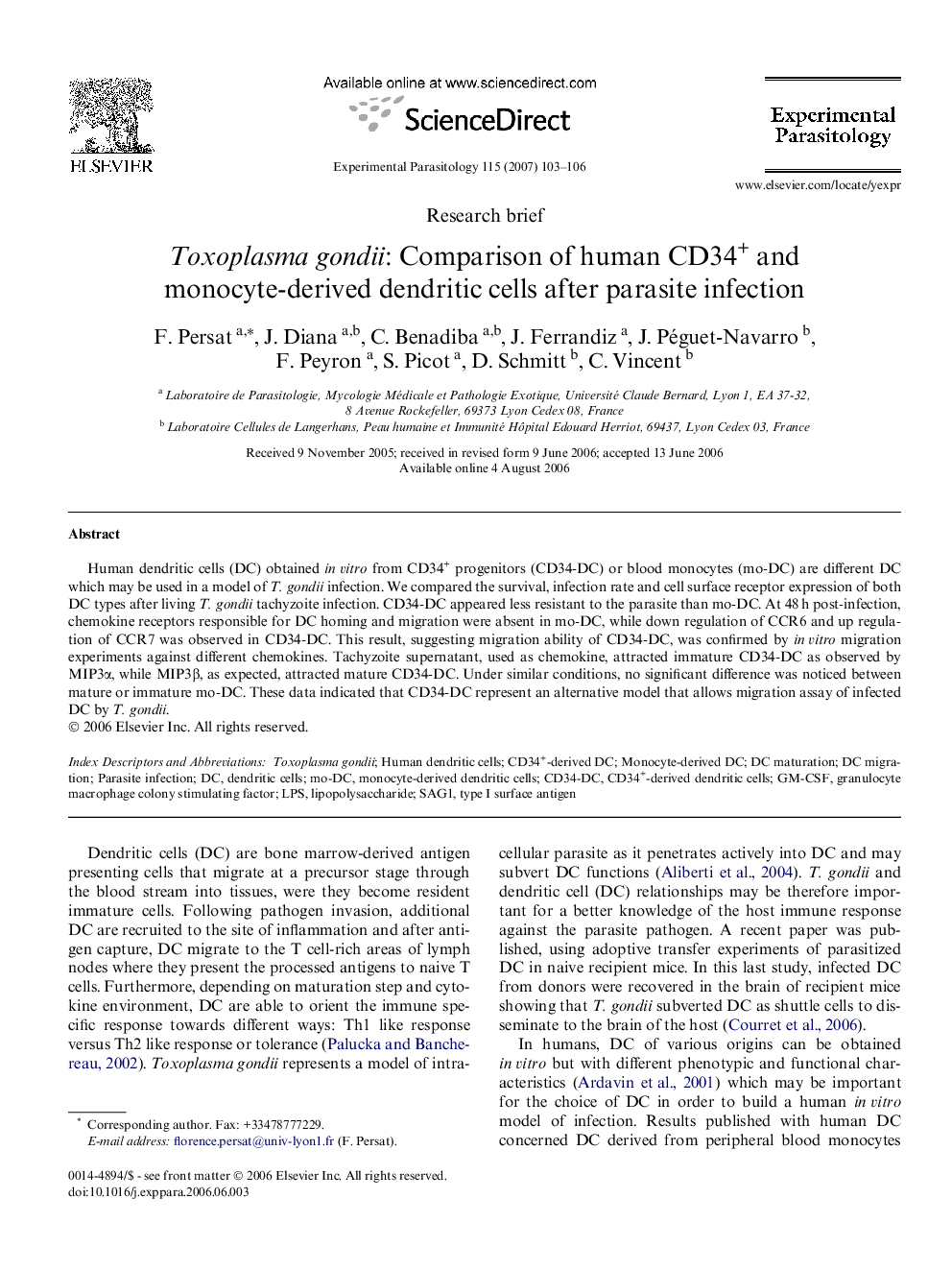| کد مقاله | کد نشریه | سال انتشار | مقاله انگلیسی | نسخه تمام متن |
|---|---|---|---|---|
| 4372237 | 1302588 | 2007 | 4 صفحه PDF | دانلود رایگان |

Human dendritic cells (DC) obtained in vitro from CD34+ progenitors (CD34-DC) or blood monocytes (mo-DC) are different DC which may be used in a model of T. gondii infection. We compared the survival, infection rate and cell surface receptor expression of both DC types after living T. gondii tachyzoite infection. CD34-DC appeared less resistant to the parasite than mo-DC. At 48 h post-infection, chemokine receptors responsible for DC homing and migration were absent in mo-DC, while down regulation of CCR6 and up regulation of CCR7 was observed in CD34-DC. This result, suggesting migration ability of CD34-DC, was confirmed by in vitro migration experiments against different chemokines. Tachyzoite supernatant, used as chemokine, attracted immature CD34-DC as observed by MIP3α, while MIP3β, as expected, attracted mature CD34-DC. Under similar conditions, no significant difference was noticed between mature or immature mo-DC. These data indicated that CD34-DC represent an alternative model that allows migration assay of infected DC by T. gondii.
Journal: Experimental Parasitology - Volume 115, Issue 1, January 2007, Pages 103–106